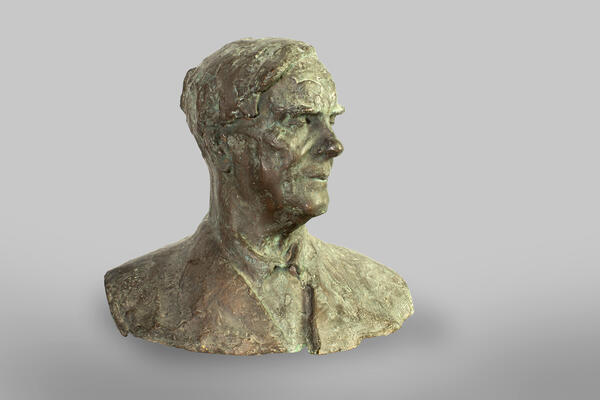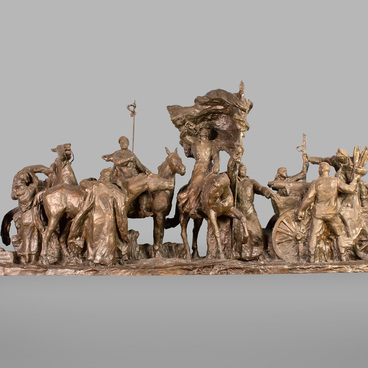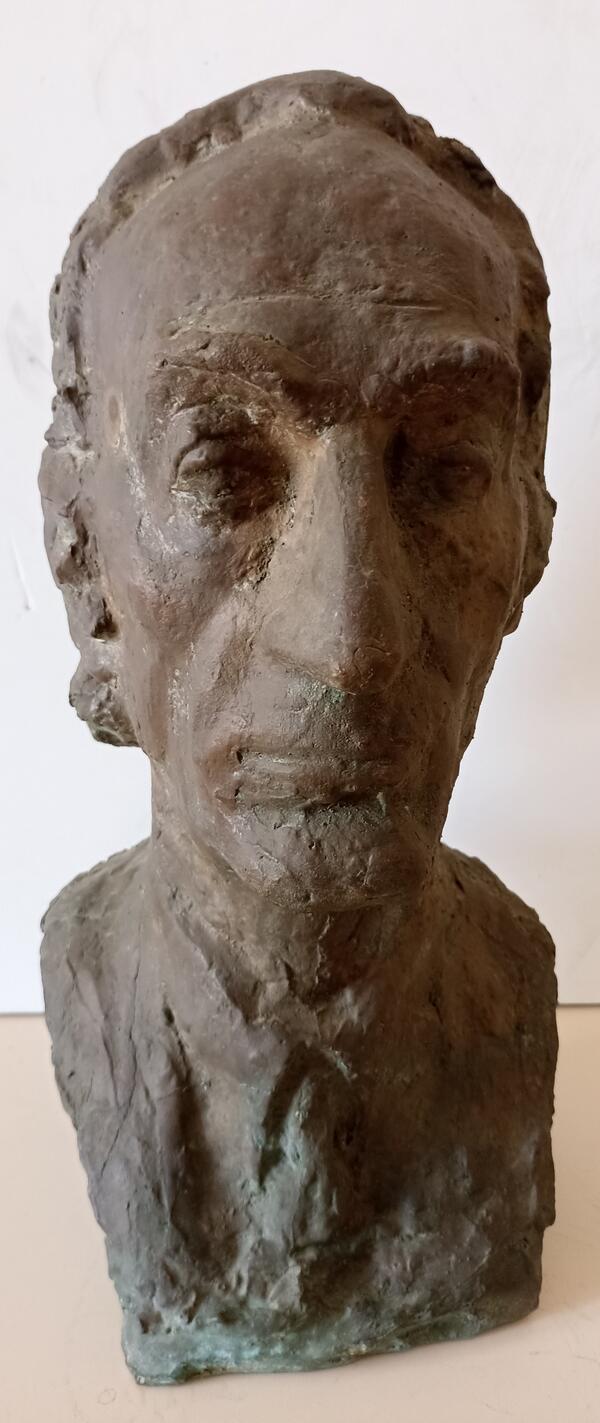The Tambov Art Gallery houses a sculptural portrait of the Nobel laureate and physicist Pyotr Leonidovich Kapitsa. The portrait was created by the Soviet, Armenian and Russian sculptor, painter, graphic artist, and teacher Nikolay Bagratovich Nikoghosyan.
Nikolay Bagratovich Nikoghosyan was a People’s Artist of the USSR, a full member of the Russian Academy of Arts, and the USSR State Prize winner. The sculptor is known for his numerous sculptural portraits of figures of Armenian and Russian culture. Nikoghosyan was born on December 2, 1918, in the village of Shagriar (now Nalbandyan), Armenia. In 1930, he moved to Yerevan. Between 1937 and 1940, he studied at the art school at the Repin Leningrad Institute of Painting, Sculpture and Architecture. In 1952, he graduated from the department of sculpture (the sculpture workshop of Professor Matvey Manizer) of the Moscow State Art Institute named after Vasily Surikov. Between 1985 and 2005, Nikoghosyan was a professor at the department of architectural plastics of the Moscow Institute for the Industrial and Applied Arts (now the Moscow State Stroganov Academy of Industrial and Applied Arts).
The sculptor created the work called “Portrait of Academician Pyotr Leonidovich Kapitsa” in 1956. In it, using the combination of picturesque modeling and deep psychologism, he managed to convey the complex and multifaceted personality of the outstanding scientist. The sculptor wrote a letter to the Tambov Art Gallery, which read: “the portrait of Academician Pyotr Leonidovich Kapitsa was cast in two copies. One is in the Tretyakov Gallery, and you have the other in the Tambov Art Gallery.”
Pyotr Leonidovich Kapitsa was a famous Russian scientist and physicist. He was engaged in the development of low-temperature physics and research of strong magnetic fields. Together with Nikolay Semyonov, Kapitsa proposed a method for determining the magnetic moment of an atom. Developing the general theory of electromagnets, Pyotr Leonidovich obtained constant current generators. Kapitsa’s contribution to science cannot be overestimated. He received many USSR awards. In 1978, Pyotr Leonidovich Kapitsa received the Nobel Prize “for his basic inventions and discoveries in the area of low-temperature physics”.
Nikolay Bagratovich Nikoghosyan was a People’s Artist of the USSR, a full member of the Russian Academy of Arts, and the USSR State Prize winner. The sculptor is known for his numerous sculptural portraits of figures of Armenian and Russian culture. Nikoghosyan was born on December 2, 1918, in the village of Shagriar (now Nalbandyan), Armenia. In 1930, he moved to Yerevan. Between 1937 and 1940, he studied at the art school at the Repin Leningrad Institute of Painting, Sculpture and Architecture. In 1952, he graduated from the department of sculpture (the sculpture workshop of Professor Matvey Manizer) of the Moscow State Art Institute named after Vasily Surikov. Between 1985 and 2005, Nikoghosyan was a professor at the department of architectural plastics of the Moscow Institute for the Industrial and Applied Arts (now the Moscow State Stroganov Academy of Industrial and Applied Arts).
The sculptor created the work called “Portrait of Academician Pyotr Leonidovich Kapitsa” in 1956. In it, using the combination of picturesque modeling and deep psychologism, he managed to convey the complex and multifaceted personality of the outstanding scientist. The sculptor wrote a letter to the Tambov Art Gallery, which read: “the portrait of Academician Pyotr Leonidovich Kapitsa was cast in two copies. One is in the Tretyakov Gallery, and you have the other in the Tambov Art Gallery.”
Pyotr Leonidovich Kapitsa was a famous Russian scientist and physicist. He was engaged in the development of low-temperature physics and research of strong magnetic fields. Together with Nikolay Semyonov, Kapitsa proposed a method for determining the magnetic moment of an atom. Developing the general theory of electromagnets, Pyotr Leonidovich obtained constant current generators. Kapitsa’s contribution to science cannot be overestimated. He received many USSR awards. In 1978, Pyotr Leonidovich Kapitsa received the Nobel Prize “for his basic inventions and discoveries in the area of low-temperature physics”.






